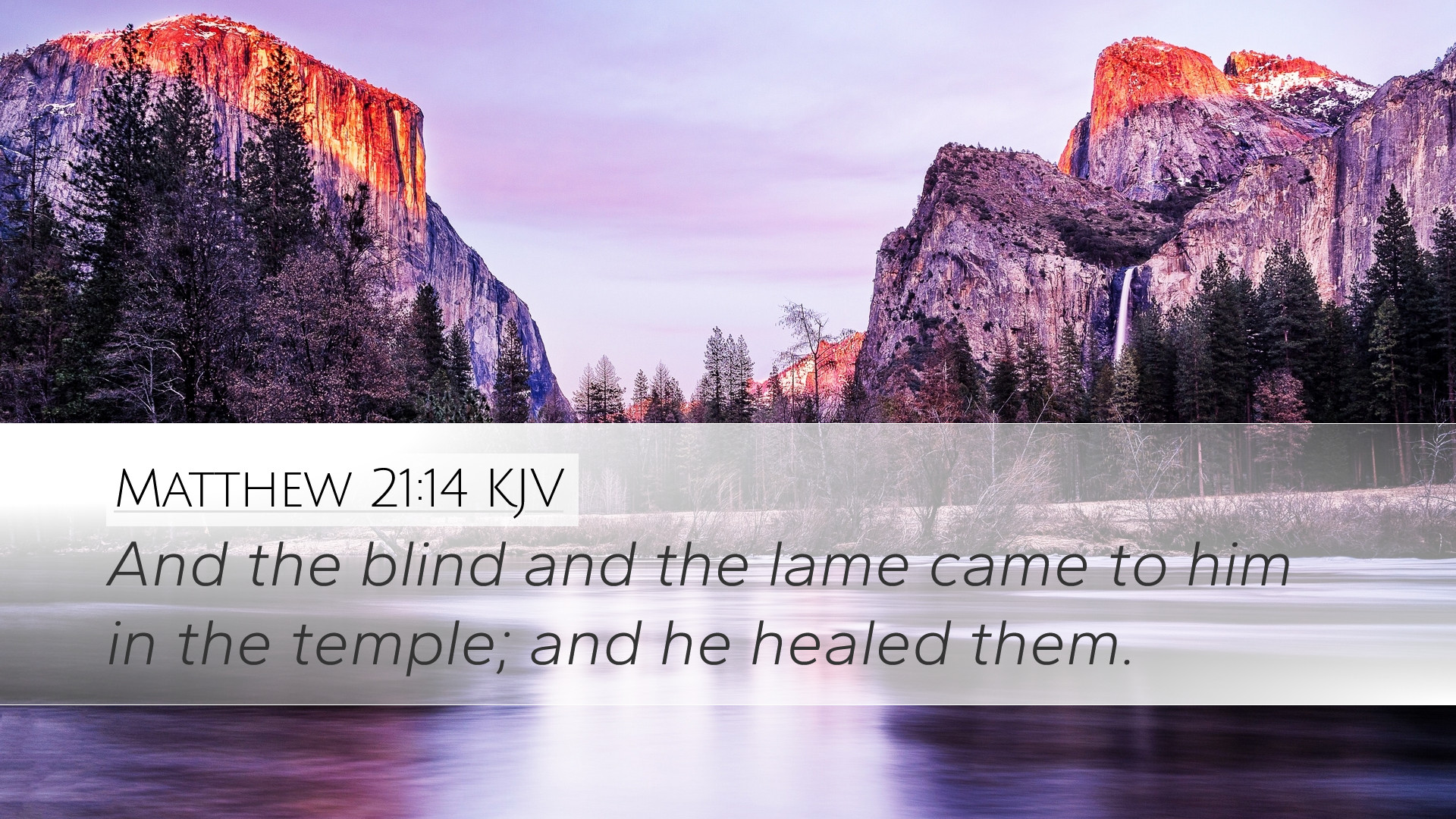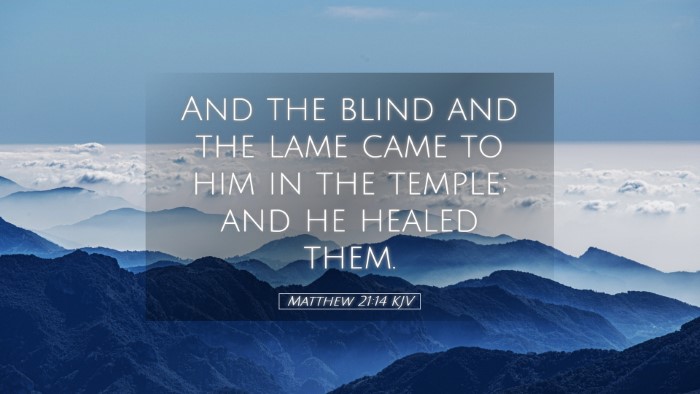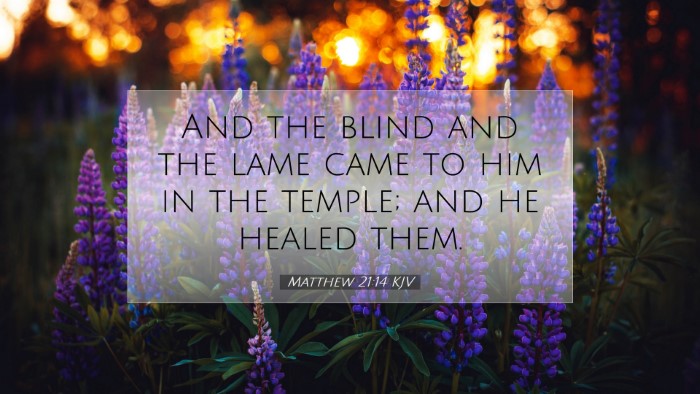Commentary on Matthew 21:14
Verse Reference: Matthew 21:14 - "And the blind and the lame came to him in the temple; and he healed them."
This verse presents a poignant moment in the ministry of Jesus, capturing the intersection of divine compassion and the critique of religious institutions. Matthew Henry, Albert Barnes, and Adam Clarke provide profound insights into this passage. Below is a combined commentary that elucidates its meaning for pastors, students, theologians, and Bible scholars.
Contextual Analysis
The events surrounding Matthew 21:14 occur during Jesus’ final week before His crucifixion. Following His triumphal entry into Jerusalem, Jesus cleanses the temple (Matthew 21:12-13), where He confronts the commercialization of worship. This act sets the stage for the subsequent healings, which symbolize a restoration of what the temple should represent—a place of healing, prayer, and communion with God.
Insights from Matthew Henry
- The Nature of Christ's Healings: Henry points out that the blind and the lame, marginalized in society and often seen as under God’s judgment, found acceptance in the presence of Jesus. Their coming to Him signifies a spiritual hunger and recognition of their need for healing.
- Symbolism of the Temple: The temple, which had become a den of thieves, was restored to its intended purpose through Christ. Henry emphasizes that true worship should be characterized by compassion and divine love, reflected in these miraculous healings.
Insights from Albert Barnes
- Historical Context: Barnes notes that the physical ailments of blindness and lameness are often used throughout Scripture as analogies for spiritual blindness and lameness. In healing the physical, Jesus also addresses the deeper spiritual needs of humanity.
- Faith in Action: According to Barnes, the act of the blind and lame approaching Jesus demonstrates faith. He argues that the people’s expectation of healing reveals their understanding of Jesus’ authority, contrasting sharply with the chief priests and scribes who were blind to His true nature.
Insights from Adam Clarke
- Importance of the Healings: Clarke highlights that the healings performed during this time affirmed Jesus’ identity as the Messiah. The act of healing in the temple showcases the coming kingdom of God, where the marginalized are welcomed and restored.
- Contrast with Religious Leaders: Clarke also discusses the opposition Jesus faced from religious leaders. Their refusal to recognize Him, even in the face of miraculous validations, stands in stark contrast to the faith exhibited by the afflicted. This serves as a warning to those in positions of religious authority to remain open to God’s work.
Theological Implications
From a theological perspective, Matthew 21:14 encompasses several key themes:
- God's Inclusive Grace: The act of Jesus healing the blind and the lame underscores the message of inclusivity in the kingdom of God. No one is beyond the reach of His grace.
- Restoration of Relationship: These healings reflect God’s desire to restore His people, both physically and spiritually. Such restoration provides an image of the ultimate healing found in Christ.
- The Role of Faith: This passage emphasizes the necessity of faith, embodied by those who sought Jesus. It invites reflection on personal faith and the readiness to come to Christ regardless of societal judgments or personal limitations.
Applications for Ministry
For pastors and ministry leaders, Matthew 21:14 offers practical applications:
- Emphasizing Compassion: Ministry should reflect Christ’s compassion, actively reaching out to those marginalized by society. Churches are called to be havens for the hurting.
- Encouraging Faith: Teaching and preaching should encourage faith in God’s healing power, reminding congregants that Jesus is still active and can heal both physical and spiritual ailments.
- Evangelistic Outreach: This passage challenges the church to engage in evangelistic outreaches that invite the 'blind and lame' of contemporary society—those trapped in sin, despair, and hopelessness—to find healing in Christ.
Conclusion
Matthew 21:14 serves as a powerful reminder of Jesus’ ministry—one of healing and restoration. Through this verse, believers are beckoned to proclaim the message of hope, inspire faith, and champion an inclusive community that mirrors the heart of Jesus. The collective insights from Matthew Henry, Albert Barnes, and Adam Clarke equip us to better understand and apply the transformative nature of this scripture in our lives and ministries.


